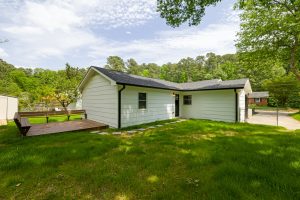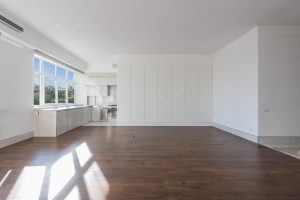Mobile homes are associated with affordability, ease of upkeep, and a less stressful way of life. Their popularity is a reference to the many advantages of living in a mobile home.
Although manufactured homes resemble regular homes in appearance, they differ in many ways regarding financing and the overall living experience. Manufactured homes, for example, are not eligible for typical financing sources, unlike regular residences or traditional homes.
When it comes to living experience, mobile homes are often known to be in communities that include shared amenities, like swimming pools, fitness centers, playgrounds, and clubhouses.
Living in a Double-Wide Mobile Home
Many first-time homebuyers are skeptical of their purchases unless they are provided convincing answers.
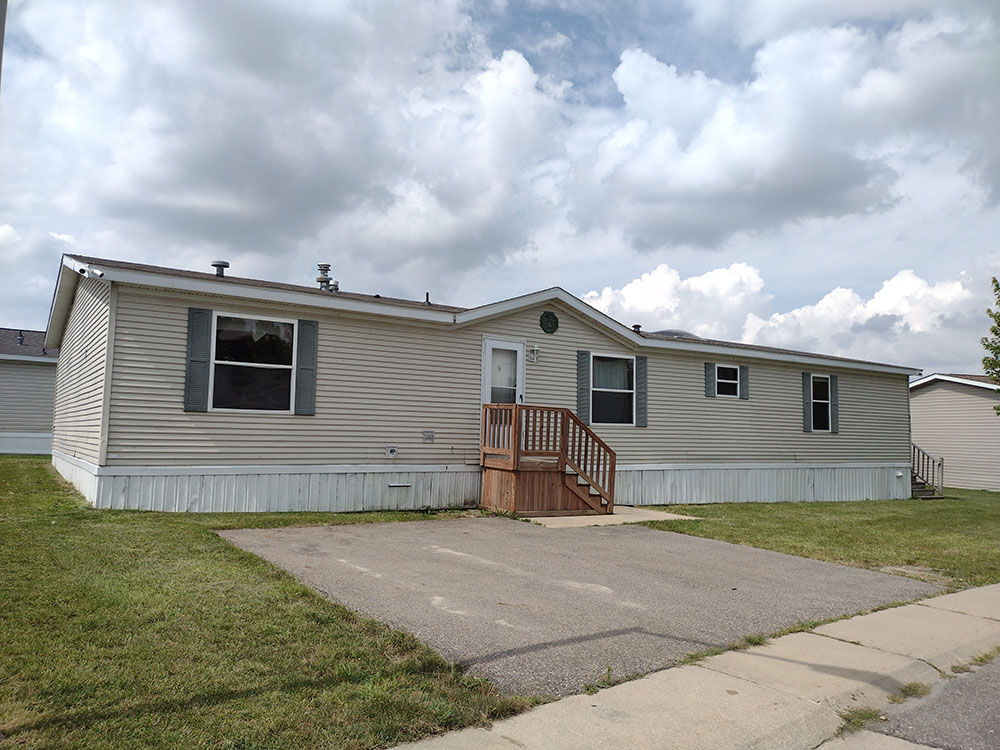
So, should you consider purchasing a mobile home? Like many other homebuyers, you want to examine the benefits and drawbacks before making a purchase.
Even if you’re a seasoned homebuyer, there’s likely a lot you don’t know about mobile homes. As a result, we’ll reveal some fun facts regarding mobile homes that you should be aware of.
What’s a Double-Wide Mobile Home?
A double-wide mobile home ranges in size from 24′-36′ wide and 48′-80′ long. They comprise two identically sized portions of a home, each about the size of a single wide, linked together.
The mobile home is delivered in two halves, then put together on-site to form a single unit. Despite double-wide homes being larger, they do not have as many bedrooms as you may imagine.
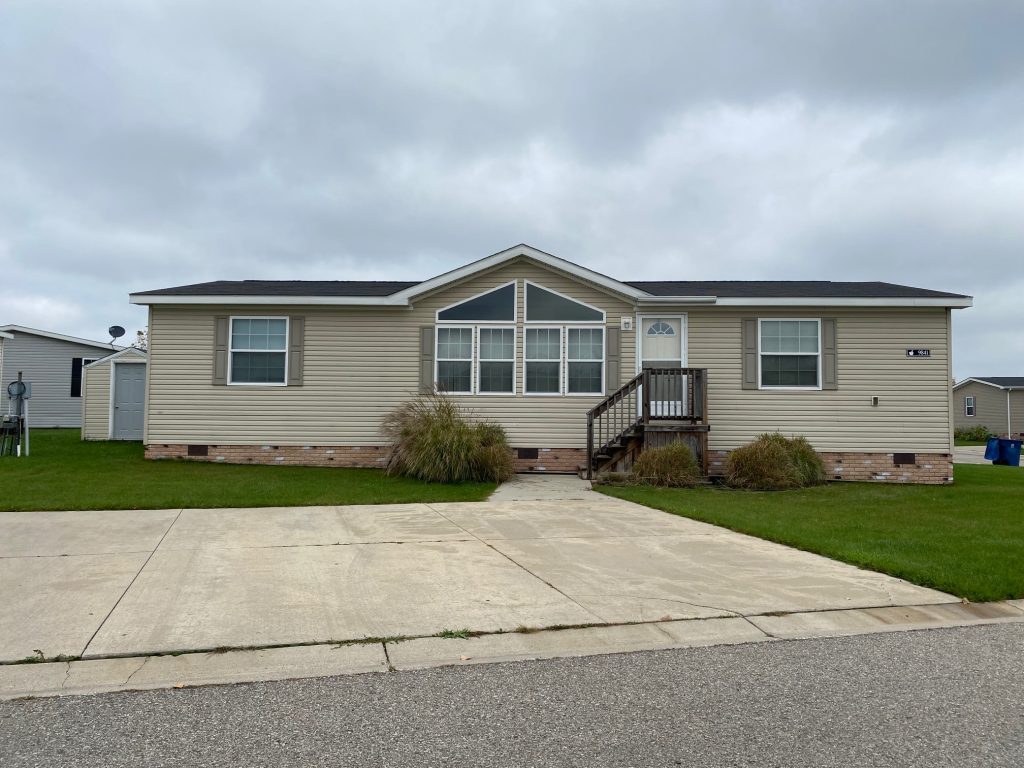
A typical double-wide home contains, at minimum, three bedrooms and two bathrooms, allowing residents to have extra living space.
According to the most recent data from the Census Bureau’s Manufactured Housing Survey (MHS), a new double-wide mobile home would on average cost you about $107,500.
So, here are things you should know about double-wide mobile homes (manufactured housing).
Large Living Space
As the name suggests, a double-wide mobile home is twice the size of a single-wide mobile home. It features 26 x 56 feet, on average, and floor plans that range from 1,000 to 2,300 square feet.
With that said, residents get the chance to enjoy a larger living space than living in a single-wide home.
In other words, a double-wide mobile home is a terrific way to save money while still giving you and your family the space you need to live a full life and have a comfortable place.
If you have a lot of personal property, a double-wide home is a better option for living than a single-wide home.
How Long Does it Last?
According to the U.S. Department of Housing and Urban Development (HUD), a manufactured home could last as long as site-built homes, if installed correctly. If your double-wide home follows the HUD code, your home could last anywhere from 30 to 55 years.
Due to the following factors, however, a double-wide home may not endure as long:
Initial Installation
Many of the difficulties that appear later in a mobile home are caused by improper installation.
In this situation, the quality of the materials used and the construction process are never to blame because when a home is released from a factory, it undergoes a rigorous inspection in accordance with HUD regulations.
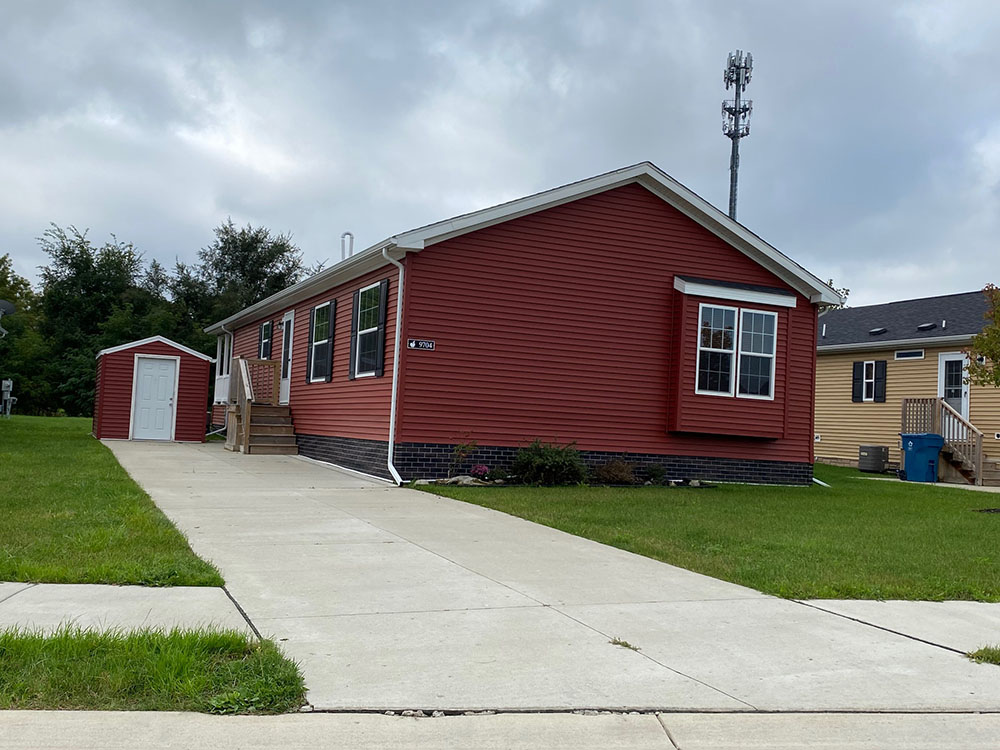
A mobile home’s design is also built to endure transportation pressure or vibration, if you will. As such, your home will arrive at the site as it should be, in the right condition and ready for installation.
You run the danger of jeopardizing a home’s structural integrity if you leave the installation process to untrained people.
As a result, after the installation, hire an experienced inspector to double-check that everything was completed correctly and that any issues were resolved before moving in.
Foundation
The condition of your foundation will determine the longevity of your home. If done incorrectly, the lifespan of your home may be less than you anticipated.
Ideally, there are various foundations, some of which are temporary and others that are permanent.
With that said, the type of foundation approach to select will be determined by the location of your home. A home built in a mobile home park, for example, may have a different foundation than one built on private land.
Water Damage
The presence of water significantly reduces a home’s longevity. Water is its greatest foe. Typically, if you have leaking plumbing, your home’s materials could be damaged quickly.
If you don’t tackle the problem right away, a little issue could evolve into a major issue that would cost you more money to fix.
Cost Savings of Double-Wides
A double-wide mobile home is more affordable compared to a stick-built home. You stand a chance to save more money than buying a traditional home.
When you compare the cost per square foot in a double-wide to that of a typical home, you’ll see how much money you’ll save.
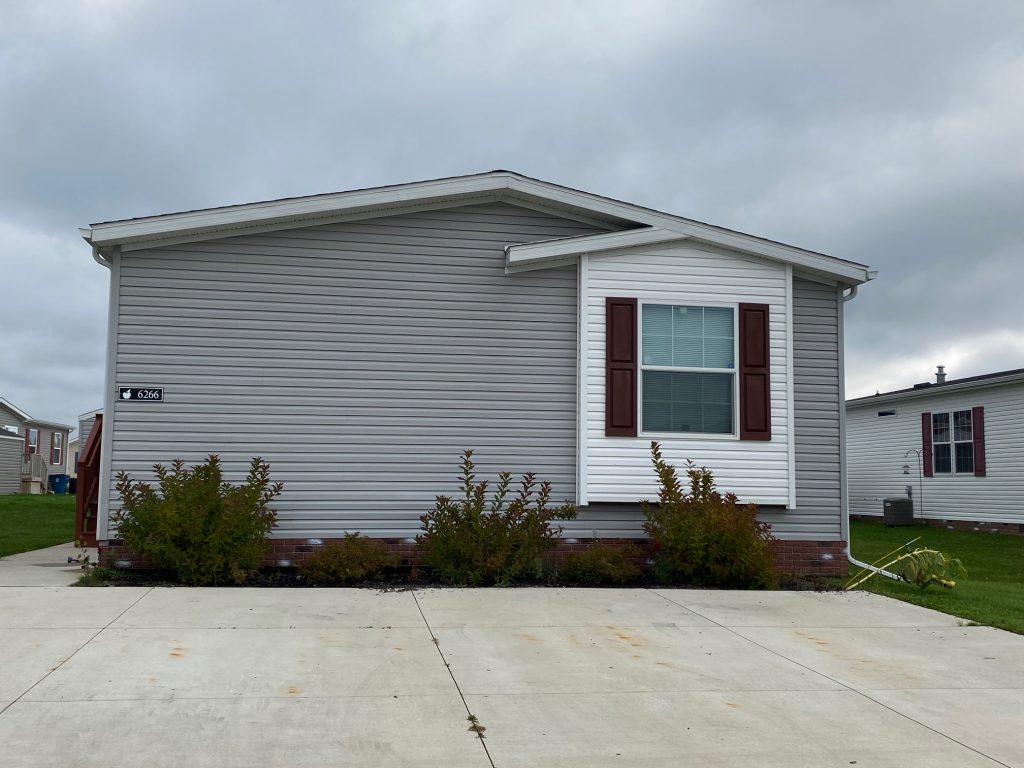
Purchasing a typical home is often a significant financial investment. You’d need a large lump sum of cash for a downpayment, and you will spend a significant amount of money on interest rates over time.
On the other hand, a double-wide has a lower payment requirement and, thus, saves more money.
Transportation and Installation
A double-wide home, as the name implies, is larger in size. As a result, construction, transportation, and installation will cost a bit more and take a little longer.
A double-wide home requires two capable drivers who can coordinate the entire process in order to deliver the home safely. Experienced drivers have the knowledge and skills to navigate the road challenges and arrive at the installation site.
When the home arrives, the foundation is already prepared, and all that is left is to complete the installation.
Now it’s time to start putting the mobile home together after it’s arrived safely. The procedure entails leveling the home’s sides and ensuring that each end is perfectly aligned.
Even though the entire procedure may take some time, it is ultimately worthwhile. Nonetheless, before moving in, have a professional inspector evaluate your manufactured home for any potential errors that need to be addressed.
Upgrades and Options for Double-Wides
Mobile homes built prior to 1976 were not built to HUD code, so their quality is vastly different from those of today’s manufactured homes.
Furthermore, today’s mobile homes are constructed with the most up-to-date technologies and durable materials, making them more customizable than the ones built before 1976.
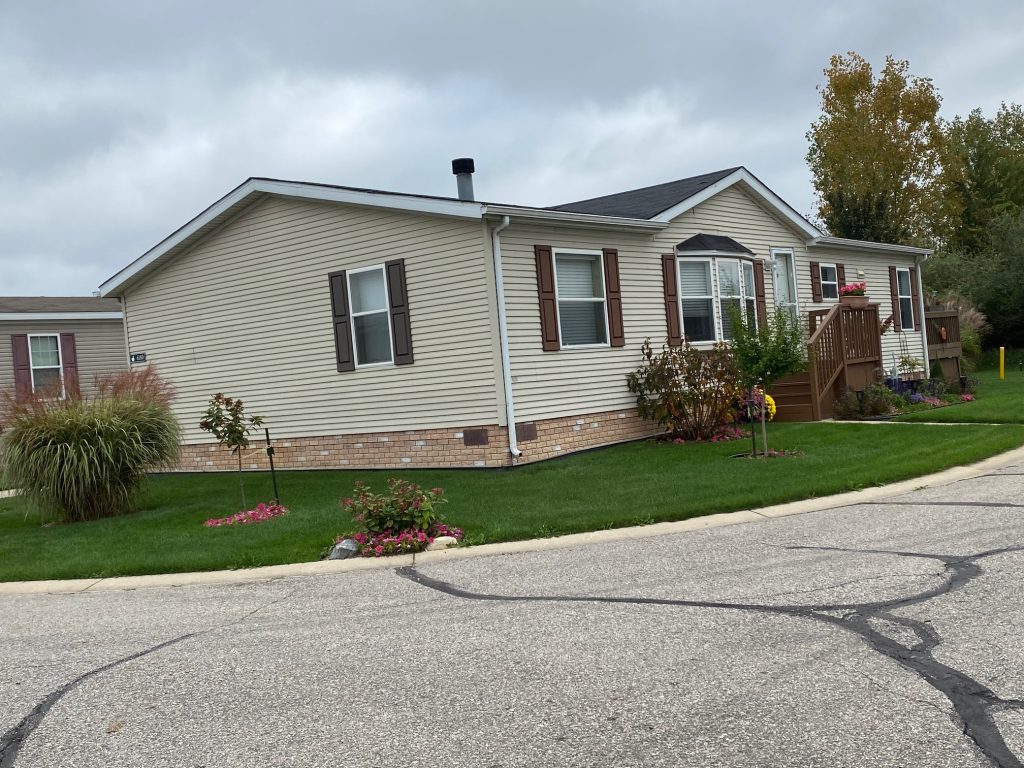
Most mobile homes are built to that factory standard, but modifications in siding materials, thermal and energy ratings, and even flooring options are available.
Buying a mobile home rather than a stick-built home saves money in the long run. On the other hand, utility expenses are bills that, regardless of the housing option you choose, will pile up if not addressed.
As a result, consider making energy-efficient modifications throughout your home, such as increased insulation, thermal windows, and LED lamps. In other words, heavily invest in making your home energy-efficient.
Even though these upgrades will cost you a little more money upfront, you will end up saving more money in the long term.
Does it Meet the HUD Standards?
The short answer is yes! All mobile homes built after 1976 are built according to the HUD code.
You can usually tell if a manufactured home is up to code by looking for the HUD tag, which is a metal plate that is fastened to the outside of the home.
The red tag often contains information such as:
- The date of manufacture
- Name and address of the manufacturing plant
- Manufacturer’s serial number and model
- A list of certification labels applied to the home
- Major equipment
- Roof load
- Heating/Cooling
- Wind zone information
The red tag is usually found at one end of each dwelling portion, about one foot up from the floor and one foot in from the roadside, or as close to that point as possible on a permanent part of the mobile home.
All manufactured homes leave the factory with a HUD tag or red tag on it to certify that they meet all the required standards. Sadly, the housing department doesn’t issue the red tags to homes built before 1976.
As such, you must confirm the type of mobile home (whether it was built before or after 1976) that you’re buying.
Financing
Despite the fact that mobile homes do not qualify for standard finance, a mobile home buyer can still acquire their dream house through various financing options.
Some of the financing alternatives available to you for securing your property are as follows:
- FHA Loans
- VA Loans
- Chattel Loans
- Personal Loans
If you acquire private land and place your double-wide on it, you may be eligible for conventional loans, much like stick-built homes.
Most mobile home loans offer a repayment plan that lasts up to 30 years. However, some loans, such as chattel loans, may require you to pay higher interest rates.
As a result, if you want better loan terms, work on improving your credit score and keeping it as high as possible.
If you want to qualify for affordable housing interest rates, you should have a credit score of at least 700; however, a credit score of 750 or higher will get you better loan rates on the market.
It’s not all doom and gloom if you have a bad credit score; you can still acquire mobile home financing. Consider paying bills on time, as even one late bill can cause your credit score to drop. Credit repair is not a simple task.
Depreciating Value
Unlike real estate or traditional homes, mobile homes depreciate over time. As such, if you plan to buy one, consider this factor.
With that being said, with proper care, and by that we mean following normal maintenance procedures, your double-wide can maintain, if not grow, its value for a very long period.
The benefit of mobile homes is that they require little care compared to real estate residences, which require extensive maintenance.
It’s critical to make repairs to your property as soon as you identify an issue before it becomes a severe one. Not only will you save money, but you will also prevent your home from requiring too many repairs, which will degrade it in the long run.
Not So Mobile
Even though the name suggests it is mobile, well, that’s not entirely true. Once your home is delivered to the site, the wheels are removed and the home is placed upon the foundation prepared.
Since some residences are built on solid foundations, it is unlikely that they can be relocated. That is why, before purchasing a mobile home, you must have a clear plan in place and assess your options for the future so that you do not have to relocate the home.
Stigma and Stereotypes
Across the country, mobile homes are still associated with stigma and misconceptions. Many people still link today’s mobile home with those manufactured prior to 1976.
Today’s manufactured homes are built in accordance with HUD guidelines, and the finished product is so similar to a typical home that you can’t tell the difference once you’re inside.
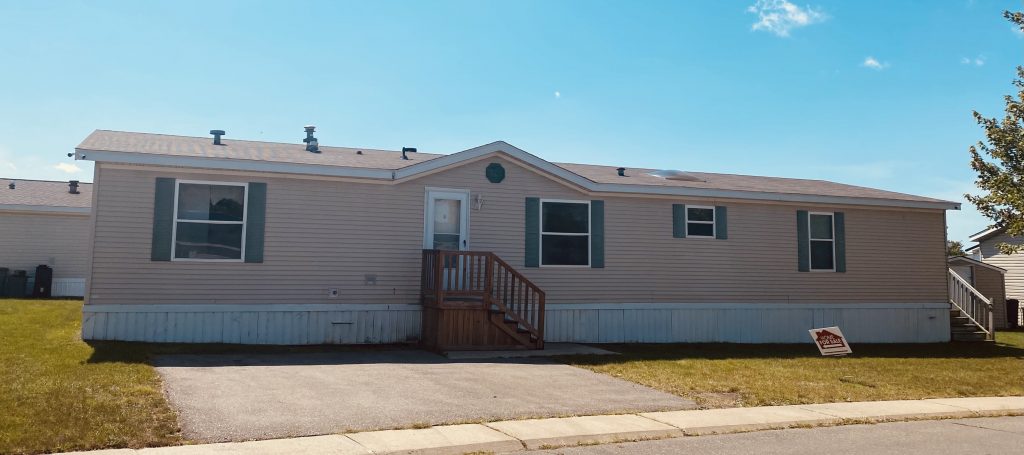
Many local communities have realized the need for affordable housing alternatives over the years and have opted for mobile homes as their preferred option.
As a result, local governments have loosened their laws to allow mobile housing to be included in their communities.
Positive actions like this have helped to improve the perception of mobile homes across the country.
Buying in a Park
When buying a mobile home, you have two options: buying one in a trailer park or buying one and putting it on your own land.
If you decide on the first option, remember to account for the park’s lot costs, as well as the park’s community laws and regulations.
In a perfect world, you’d be paying rent, but unlike renting an apartment, you’d have equity in your home.
Despite the rules and the lot rent, buying a mobile home in a park or trailer park provides a lot of advantages.
Minimal Maintenance
One of the key advantages of living in a mobile home park is low maintenance. The mobile home park management will handle the majority of the upkeep.
Almost all mobile home communities or parks offer on-site management and devoted personnel who will reply to your repair request at any moment and get it taken care of. Besides, you’ll spend less on maintenance compared to a traditional home.
In a traditional home, you are responsible for all maintenance. It’s up to you to contact the maintenance crew and control them. Furthermore, every time you call the service provider, you’ll end up spending a lot of money on the repair.
Privacy
You and your family will have limited privacy and space if you rent an apartment. On the other hand, mobile home parks have an advantage in this regard because neighbors are rarely so close.
In apartments, the walls are sometimes the only thing separating you from your next-door neighbor. Loud music may be heard on the other end from time to time, which can be annoying, especially if you prefer silence.
This is rarely the case in mobile home parks because manufactured homes are spaced apart, and tougher community standards ensure that no one is disturbed by other inhabitants or noisy neighbors.
Location
The majority of mobile home parks/mobile home communities are in convenient locations with beautiful views and ponds. As a result, significant amenities, such as public parks, shopping complexes, schools, and health care facilities are all easily accessible.
No Property Taxes
Property taxes are a feature of real estate properties, but not mobile homes, which pay minimal or no taxes because they are considered personal property. Purchasing a mobile home saves you money that would otherwise be spent on taxes.
Place on a Private Land
You may have some advantages over someone who lives in a park or mobile home community if you choose to buy a new manufactured home and locate it on private land.
For instance, you won’t need to pay lot rent every month; however, buying land may also mean you need a large sum of money upfront to purchase land.
The good thing about setting your home on private land is that the property’s value increases over time and you may recoup your initial investment.
Should You Choose Mobile Home Living?
Whether or not you should consider mobile home living is a significant question for us to respond to. Everyone’s social and financial circumstances are unique; therefore, deciding on the best housing option for you and your family is totally up to you.
That said, you must consider all of your options before deciding on the best course of action.
Here are some frequently asked questions about mobile home living:
How often should a mobile home be leveled?
Experts recommend that mobile homeowners double-check their leveling 90-days after installation, and then annually, especially in the summer.
How much does it cost to put a foundation under a mobile home?
Whether built on a concrete slab or on a crawl space, a single-wide home will cost around $3,000 on average. Depending on the size, a double-wide home might cost anywhere from $7,000 to $12,000.
How high should a mobile home be off the ground?
Ideally, a manufactured home should be 13 feet, 6 inches from the ground to the rooftop. This is about the same as the average ceiling height in a stick-built home, which is between nine and 10 feet.
What is the difference between a mobile home and a manufactured home?
The method of construction differs between a mobile home and a manufactured home. A manufactured home was built after 1976 and is subject to the HUD code, whereas a mobile home is built before 1976 and is not subject to the HUD standards.
How long does it take to deliver and set up a manufactured home?
Developing raw land should take no more than a week to six weeks. To put it another way, it depends on the project’s scope at your location. The longer it will take if your location requires further preparation, i.e. earth grading.
Is it worth it to upgrade your home?
Upgrades to your home, like replacing conventional bulbs with LEDs, will increase the energy-efficiency of your mobile home. Also, you may want to install a controlled thermostat. Increasing the energy-efficiency level ultimately lowers the monthly energy bill.
Conclusion
New homebuyers will appreciate the benefits of double-wide mobile home living. It’s truly impressive, from the price to the larger living spaces, which are equivalent to those found in a traditional home.
Whether you consider mobile home parks or not, you’ll get the benefits that come with owning a double-wide mobile home.
Since information is essential when making purchasing decisions, the information provided in the preceding recommendations should be sufficient to help you make the best selection for you and your family.


